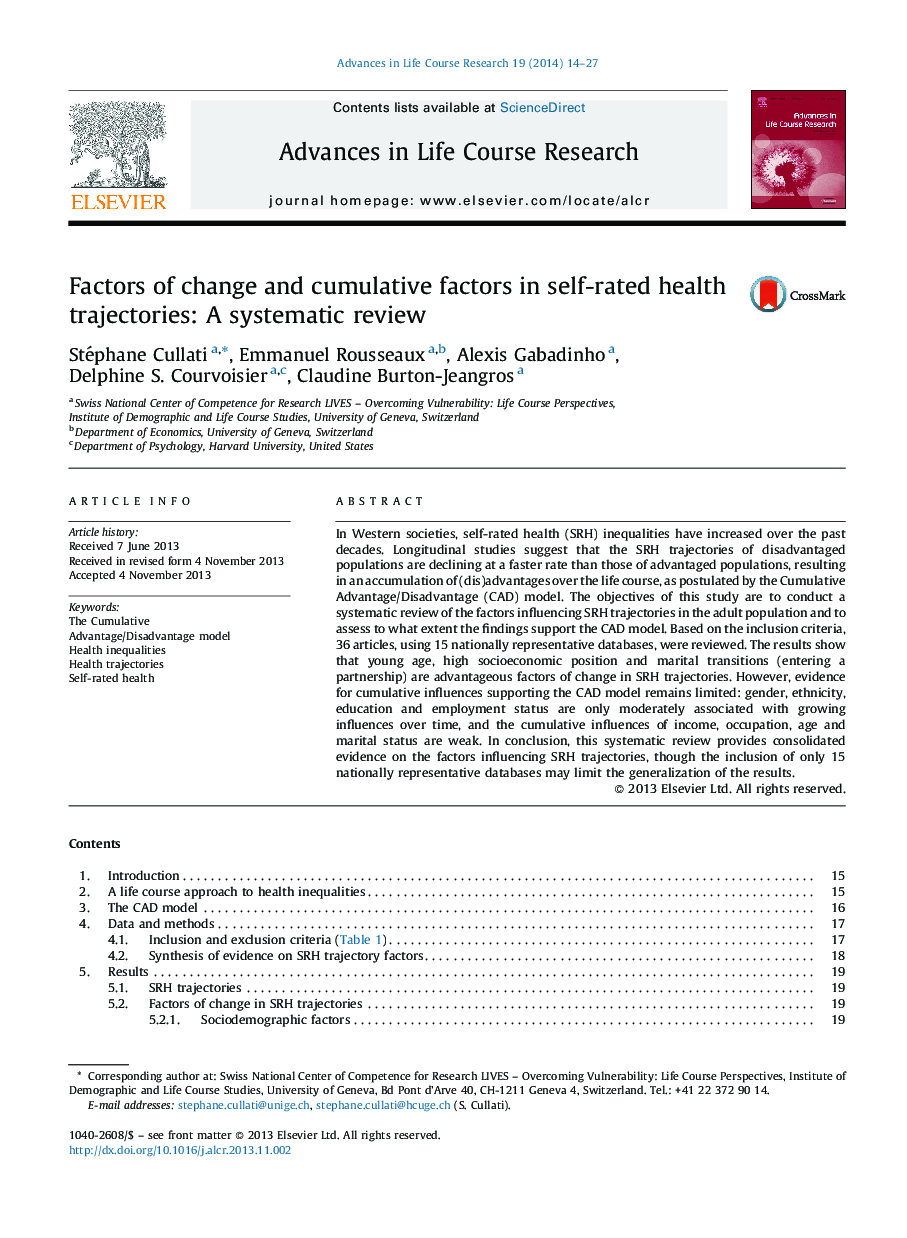| Article ID | Journal | Published Year | Pages | File Type |
|---|---|---|---|---|
| 313720 | Advances in Life Course Research | 2014 | 14 Pages |
In Western societies, self-rated health (SRH) inequalities have increased over the past decades. Longitudinal studies suggest that the SRH trajectories of disadvantaged populations are declining at a faster rate than those of advantaged populations, resulting in an accumulation of (dis)advantages over the life course, as postulated by the Cumulative Advantage/Disadvantage (CAD) model. The objectives of this study are to conduct a systematic review of the factors influencing SRH trajectories in the adult population and to assess to what extent the findings support the CAD model. Based on the inclusion criteria, 36 articles, using 15 nationally representative databases, were reviewed. The results show that young age, high socioeconomic position and marital transitions (entering a partnership) are advantageous factors of change in SRH trajectories. However, evidence for cumulative influences supporting the CAD model remains limited: gender, ethnicity, education and employment status are only moderately associated with growing influences over time, and the cumulative influences of income, occupation, age and marital status are weak. In conclusion, this systematic review provides consolidated evidence on the factors influencing SRH trajectories, though the inclusion of only 15 nationally representative databases may limit the generalization of the results.
